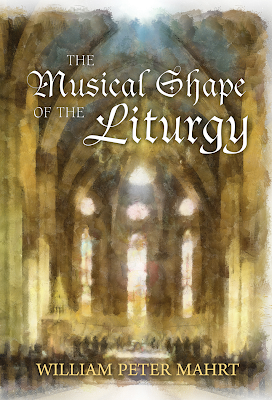I’ve been receiving an unusual number of emails recently that are asking fundamental (or rudimentary) questions.This is probably a good sign because it indicates an ever widening number of people who are interested in reforming Catholic music in a more liturgical direction. One yesterday asked for a basic tutorial in the main books of chant music for the Catholic liturgy. This seems like a reasonable request.
By the way, I’ve picked the number five here for no apparent reason. It could be shrunk to two or expanded to ten. These five are the ones you are most likely to encounter today.
1. The Graduale Romanum. This is the book of music for the Catholic Mass. There is an edition for the preconciliar form and the postconiliar form (the differences are adapted for the changed calendar). That is the book is normative and foundational was reinforced by Paul VI in his introduction to the 1969 Missal, reprinted in the new Missal. It is the one book that provides all you need for Masses throughout the year. It is entirely in Latin, even the front matter. If you are in Catholic music and plan to stay there awhile, you have to have this book.
One indispensable feature, for example: it lists the Psalms attached to each antiphon.
It is called the Graduale because of the name of the chanted Psalm for Mass, which is also called the Graduale. This gets confusing. Someone says “Graduale” and you don’t know if he means the song or the book. The other problem with this book is that because it is all in Latin, it can be the most intimidating book among them all. And if you want to really ramp up the intimidation factor, have a look at the Graduale Triplex, which contains 9th century signs that were in use before the invention of the staff!
Even though this book is at the core of the whole universal Catholic music experience, it is probably not the book you need to get first or even at all. You can get most of what you need from this book in an edition that is specifically made for the English speaking world. Still it is a great book to have because it is the one that is the musical equivalent of the Latin Missale Romanum.
2. The Gregorian Missal. This is the book to have. It is all the chants from the Graduale Romanum for Sundays and Feasts, plus English translations. The instructions are in English. The calendar is in English. It is the book that I credit with my first enlightenment to the reality that Catholic music is not something we select liturgy to liturgy but is rather part of the Mass itself. To see it for the first time can be mind blowing. Absolutely every Catholic musician must have this book. So should every priest. And Bishop. This is the book that opens up a new reality. You might not be able to sing from it, but it gives you the ideal, and that’s hugely important.
3. The Graduale Simplex. This was a book that came out in 1967 to fulfill the suggestion of the Council that a simpler book be produced for parishes. It was a missed opportunity for several reasons that I won’t go into here. It contains proper chants that can be used for entire seasons. It can still serve a purpose even though it is hardly ever used. Another version of the Simplex is Paul Ford’s By Flowing Waters, which puts the chants in English. This was probably the first book to enlighten the broader Church about the existence of Mass propers. It is also contains many other useful chants in English. I’ve have my own doubts about the long-term viability of the “seasonal propers” method but these doubts are mostly irrelevant actually. If people are singing such propers, the parish is a happy place.
4. The Parish Book of Chant. This is a project of the Church Music Association of America, compiled and typeset by Richard Rice. I would say that this book can be credited with saving chant in our time. Nearly all the books of basic Latin chant had gone out of print, leaving only the most difficult. The traditional “chant hymn” repertoire was buried in books from the 1950s and earlier. This book brought it all back to life, and, as a post-Summorum work, it actually put on display the relationship between the old and new form. It is more a pew book but is most often used by beginning choirs so they can get going with all the tunes and words that previous generations took for granted. It contains chants for the ordinary and lots of seasonal pieces, but not propers as such.
5. The Simple English Propers. This book (forgive repetition) gets parishes going on chant. It has reduced English versions of the Gregorian propers for Mass for entrance, offertory, and communion. The Gregorian mode is preserved, and every chant has Psalms. It is designed for parish use above all else. It is hassle free. The chants follow easy-to-learn formulas. I believe that history will record that this book, more than any other, made the biggest strides and bringing back the proper chants to the Mass. The book was put together by Adam Bartlett. It is a stepping stone, one that should have existed back in the 1960s but did not. It is selling so much that we are struggling to keep it in print.
There are many other important books, such as Offertoriale and Communio that provide Latin Psalms with propers. There are dozens more, depending on need. If you have a hopeless parish situation, at least consider Compline.
I sincerely hope this overview helps!





